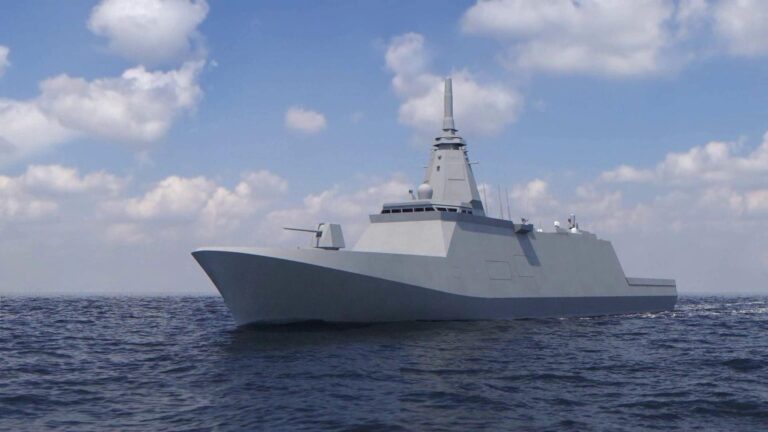Australia’s recent agreement with Japan to acquire advanced frigates marks a significant step forward in bolstering the nation’s naval capabilities. This strategic partnership aims to address critical gaps in Australia’s maritime defense amid a shifting Indo-Pacific security landscape. However, while the deal promises enhanced technological assets and closer bilateral ties, experts caution that it also introduces a range of potential risks-from operational challenges to geopolitical sensitivities-that Canberra will need to carefully navigate. This article explores the implications of the frigate deal, weighing its benefits against the complexities it entails.
Australia’s Frigate Agreement with Japan Addresses Key Naval Capability Gaps
The recent agreement between Australia and Japan to jointly develop next-generation frigates represents a strategic move to bridge significant capability gaps in the Royal Australian Navy’s surface combatant fleet. With increasing regional security challenges and rapid technological advancements in maritime warfare, this collaboration offers both nations access to cutting-edge naval technologies, including enhanced stealth features, integrated combat systems, and advanced missile defense. For Australia, leveraging Japan’s established expertise in shipbuilding and modular design accelerates the timeline for deploying capable frigates, ensuring greater operational readiness across Indo-Pacific waters.
However, the partnership is not without inherent complexities. While the alignment signals strengthened bilateral ties and mutual security interests, concerns linger over technological transfer limits, potential cost overruns, and interoperability issues with existing Australian platforms. The deal also calls for delicate diplomatic balancing amid evolving regional power dynamics, notably with China. Nonetheless, by navigating these risks, Australia gains a critical edge in naval capabilities, positioning the nation more assertively in maritime security.
- Advanced stealth design to reduce radar signature
- Multifunctional combat systems for versatile mission profiles
- Improved missile defense capabilities with integrated radar
- Joint R&D initiatives fostering innovation between both navies
Strategic Risks Lurk Beneath the Surface of the New Defence Partnership
While the partnership between Australia and Japan on the new frigate deal signals a significant step forward in regional defence collaboration, it is not without its strategic pitfalls. The alliance inherently ties Australia’s naval future to Japan’s defence industrial capacity and geopolitical calculations, which may not always align. Japan’s defense policies and export controls could limit the flexibility required for Australia’s long-term strategic autonomy. Moreover, reliance on a foreign partner for critical military hardware introduces vulnerabilities, especially if diplomatic tensions arise with other regional powers.
Several underlying risks should be carefully monitored:
- Supply chain dependencies: Disruptions can delay frigate delivery schedules, impacting naval readiness.
- Technological transfer limitations: Restrictions on sharing classified tech components may constrain Australia’s domestic capabilities.
- Geostrategic entanglement: Aligning too closely with Japan’s defense stance could complicate Australia’s diplomatic relations with other Indo-Pacific nations.
- Cost overruns and project delays: Collaborative projects carry risks of escalating budgets and timelines.
| Risk Factor | Potential Impact | Mitigation Strategy |
|---|---|---|
| Supply Chain | Deferred deployment of frigates | Diversify component suppliers |
| Tech Transfer | Limited upgrade capabilities | Negotiate broader IP sharing |
| Geopolitics | Strained regional relations | Maintain balanced diplomacy |
| Budget | Project delays and cost escalations | Regular cost audits |
Recommendations for Strengthening Australia’s Maritime Security Framework
To build a more resilient maritime security framework, Australia must prioritize integrated surveillance networks that combine satellite, aerial, and maritime assets in real time. Investment in cutting-edge sensor fusion technology will enhance the detection of unconventional threats such as swarming tactics and underwater drones. Additionally, fostering closer interoperability with regional partners beyond the Japan frigate deal-including ASEAN nations-will create a more robust, collective maritime domain awareness that addresses shared security challenges in the Indo-Pacific.
The government should also focus on strengthening domestic shipbuilding capabilities to reduce overdependence on foreign suppliers, which pose strategic risks during geopolitical tensions. Expanding workforce training programs and incentivizing innovation in maritime defense industries will accelerate self-sufficiency. Below is a snapshot of key areas requiring attention:
| Key Focus | Priority Actions |
|---|---|
| Surveillance Integration | Real-time data sharing, AI-based threat analysis |
| Regional Cooperation | Joint exercises, intelligence partnerships |
| Domestic Industry | Investment in R&D, skilled workforce development |
| Cybersecurity | Enhanced naval system protections, resilience drills |
The Conclusion
As Australia embarks on this landmark frigate partnership with Japan, the deal undeniably addresses strategic gaps in the nation’s naval capabilities. However, alongside the benefits come geopolitical and operational challenges that Canberra must navigate carefully. How effectively Australia manages these risks will be crucial in determining whether this collaboration strengthens its maritime defense posture or exposes new vulnerabilities in an increasingly complex regional environment.




